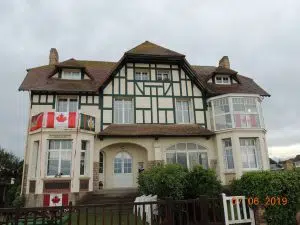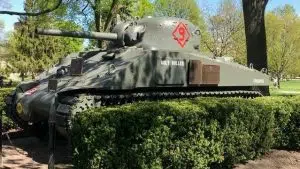
Kate Otterbein / XFM News
June 6, 2021, marks the 77th anniversary of D-Day. The Battle of Normandy is very significant in Canadian history, especially D-Day. D-Day was what began it all.
“The D-Day invasion in World War II was probably one of the most important events of the 20th century because it began the liberation of Europe from Nazi domination. The Canadians, British, and Americans landed on 5 beaches. Canada got one, Juno Beach. They landed 14,000 Canadian soldiers and about 7,000 British soldiers. It didn’t just begin the liberation of Europe, but it also kind of established Canada as a world power. We were hitting way above our weight in taking on that beach and sustaining the war effort through the efforts of the Canadian Third Infantry Division,” says historian, David Yates.
Upon arrival at the beach, there were over a thousand casualties. By the end of it, there were around 400 fatalities and many, many more wounded on June 6 alone.
“It was a hard-fought battle to crack what they called, ‘Hitler’s Atlantic Wall’, the fortifications along the Atlantic coast. The Nazis had four years to prepare because they were expecting an invasion somewhere. They knew it was going to happen, so they had all of the advantages. They had the defence, they knew the terrain,” Yates says.
He adds that this battle was an important and decisive step in ending World War II.
“What you have to remember too is that D-Day was just the beginning of what became known as the Normandy Battles for the next two and a half months. As bad as D-Day was, the heaviest fighting lay ahead,” says Yates.
Yates had the honour of attending the 75th anniversary of D-Day ceremony on June 6, 2019, accompanying students as a chaperone. It was a once-in-a-lifetime trip because it is more than likely the last big anniversary that there are soldiers who fought on Juno Beach present to tell their stories at the ceremony.
“I was awestruck. I’ve seen all the movies, I’ve seen all the documentaries, read all the books, but there’s nothing like actually being there to connect with the event. A lot of the buildings I recognized from the photographs. And when you’re on the beach, you can’t help but think what it was like, that long ride from the naval vessels and those tiny little landing crafts, what it must have felt like for those soldiers. A lot of them no more than 18, 19, 20 years old. And they were asked to do something that we’ve never asked anybody to do before and that’s put their life on the line facing the unknown,” Yates says.
Many soldiers didn’t make it past that day of June 6, 1944. But it was a crucial point in today’s freedom.
“We were standing there and it’s a nice, peaceful looking beach now. A beautiful Normandy summer town. And you think at the time, 75 years ago, that was the worst place to be,” says Yates.
One of the stops they made on their trip to Europe was to Canada House.
“There’s a very famous film clip taken from a camera that was mounted in the back of a landing craft that had men from the North Shore regiment. It’s the only live action footage taken from the Normandy Invasion and only the Canadians had that bit of film footage of the actual landing. The landing craft is bobbing towards the shore and the front comes down and our North Shore regiment start tumbling out of the landing craft. In the distance, you can see the first house that was liberated, that we now call ‘Canada House’,” Yates says.
The famous film clip can be seen in this remembrance video.
London also had a key role in the Normandy Invasion.
“Anyone who was in the 1st Hussars around London or who had relatives in the 1st Hussars, they provided the armour and Sherman tanks for the Canadians who landed at Normandy and their casualties were quite substantive. The Holy Roller, which is a surviving tank of the Hussar regiment that actually served from the D-Day landing on June 6, 1944 to May 8, the end of the war and the end of hostilities, is a landmark in Victoria Park,” says Yates.
Yates adds that it’s important for future generations to be aware of D-Day and it’s significance to Canada. It is important to both Canadian history and the history of the countries that were liberated.
“The owners of Canada House when a Canadian veteran comes by or the family of a veteran, like many people in France, welcome them with open arms. They remember the tremendous debt of gratitude that the people in France, Belgium, and the Netherlands have towards the Canadians. So much Canadian blood was shed liberating them from Nazi domination. Canadians can take pride in knowing that there’s an important part of the work that remembers what a generation of Canadians did three quarters of a century ago to restore France, Belgium, and the Netherlands. It’s really quite moving,” Yates says.







Comments